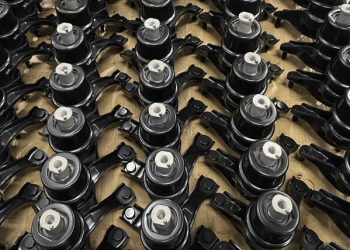Ventilation in the bathroom today is a very popular issue. If you install ventilation in the bathroom incorrectly, after a while you risk getting fungus and mold on the wall. That is, a damaged finish and an unattractive appearance of the bathroom.
We will tell you how to avoid the mentioned problems and make normal ventilation in the bathroom in this article.
Requirements for household ventilation in the bathroom
The bathroom is a closed room, which is affected by moisture with some periodicity, and it should be removed from the bathroom as soon as possible. To check the operation of the ventilation system, light a match and bring it to the ventilation grid. If the match went out, then the system works normally, if not, it needs repair or rework.
Another method is that you bring a piece of paper to the grate. If the paper sticks to the grid, the system is considered to be working, otherwise it is not. To eliminate problems in the system, first of all, you should clean the fans, and then the ventilation channels.
After that, the fan should be installed directly in the channel. To remove excess moisture, install a “warm floor” system or radiators, as well as towel dryers.
Types of ventilation in the bathroom
From the point of view of air exchange, ventilation in the bathroom can be natural or forced. In the first case, air leaves the bathroom through open doors and windows. The exit of air from the bathroom to the street occurs due to different pressures. This type of ventilation is being disrupted today due to new highly hermetic double-glazed windows. As a solution, it is suggested to buy grills for windows, as well as doors for proper microcirculation of air.
Artificial circulation is created by installing a fan in the bathroom near water heaters sacramento. The main task of such circulation is to extract air to the street. Fresh air enters the bathroom, coming from the room next to it. This method will not only allow you to almost completely remove moisture from the bathroom, but also remove unwanted odors from it.
Types of ventilation by purpose and design
By purpose, ventilation is divided into exhaust, supply and combined. In the first case, the air is removed with the help of ventilation channels. In the second case, thanks to the arrival of new air into the room, a pressure difference is created, as a result of which the stale air leaves again through the ventilation channels.
And, accordingly, the combined option includes the first two at the same time.
According to the design, ventilation in the bathroom can be ducted or ductless. In the first case, the air is cleaned in rooms with high humidity, a lot of steam and smells.
Inspection and installation of ventilation
Below is a step-by-step check of the ventilation in the bathroom:
- Open the window and door in the bathroom.
- Then take a small piece of paper, maybe a napkin.
- Bring the leaf to the ventilation hole.
- If the leaf normally holds/sticks to the surface, it means that the ventilation is working.
If not, you should remove the fan and clean the duct of debris and foreign objects. In addition, instead of paper, you can use a lighter or, alternatively, a match. The fire from them should lean at an angle. If the day turned out to be too hot, even the working system will not be able to show the desired result due to the heavy air.
You should also check the room for air flow. The same operations with matches and a lighter should be performed alternately on windows and flats. If the duct is poor, install ventilation grills on the windows and doors.
We choose a fan for the bathroom
First of all, fans are divided by the method of installation:
- Duct fans are installed in duct systems.
- Radial fans are installed at the outlet of air systems. They have a more aesthetic and stylish body, compared to channel ones.
Fans are also divided into parts of the design:
- axial,
- diametrical,
- centrifugal
- axially centrifugal.
In the first case, the axial flow is injected with the help of fan blades to create a pressure above 40 Pa.
Fans of this type are usually installed in a system that does not have ventilation ducts. They are affordable, easy to install and have good efficiency. However, they also have some disadvantages, such as low pressure and high noise level.
The second type of fans has an impeller made in the form of a drum. They do not provide a relatively high efficiency. Centrifugal fans are delivered in a stylish and aesthetic case, have good efficiency with low noise level. But they are more expensive than axial ones.
Centrifugal axial fans of all presented buxic above have the best characteristics. They combine compactness, low noise and excellent efficiency.
Operating indicators of fans
When choosing a fan, first of all, pay attention to its power. For a regular bath, 100 cubic meters per hour is quite enough for you. Also, in addition to the size of the room, you should consider the number of people living in the apartment, whether the bathroom has windows and doors, their size, and whether the bathroom has additional ventilation. It is also important to estimate how often you use the bathroom.
The next important factor is how loud the fan is. It is not recommended to use fans with a noise level above forty decibels. You can also look at fans that have such additional functions as a timer, automatic switching on and off.
You may also want to install a hydrostat that turns the fan on/off depending on how high the humidity level is in your bathroom. There are special fans with moisture protection. The amount of protection is indicated by the letters IP.
This is especially important if you want to install the fan next to the shower. In this case, you should choose a fan with the maximum protection class.
Bathroom ventilation scheme
Channels for ventilation are usually installed on the ceiling or on the walls. If you don’t have air ducts, they must be installed to install the fans as well.
Now let’s analyze the main provisions regarding the equipment of the scheme point by point.
- The hood should be installed opposite the door to improve air circulation.
- If the hole in the air duct is narrow, widen it with a perforator. If it is wide, install a plastic fan pipe and fix it with cement mortar.
- Foam the cavities in the pipe.
- Mount the hood with screws or dowels, as well as other hermetic materials to reduce vibration from the working fan.
- Connect the hood to the network using a specially connected power cable.
- And finally, there is an option to install an automatic hood that will start to ventilate only when the light is turned on.
Ventilation for a private house
If a private house has a suspended ceiling or a ceiling finished with false panels, install ventilation during the repair. If the ventilation hole is below the ceiling, make a hole with bars to remove moisture from the room.
If the ventilation is under the ceiling, install a pair of nets between the main ceiling and the false ceiling for moisture drainage. It will not be superfluous to also make a small gap for ventilation above the door – this will help extend the “life” of your ceiling.
Do not forget to take care of your ventilation. So, for example, the fan together with the grid should be washed more often, due to the fact that a lot of dust settles on them. If the fan has become defective, check whether corrosion has not formed on it due to high humidity.






